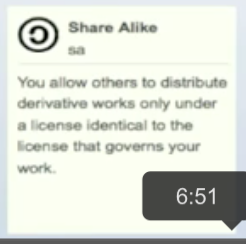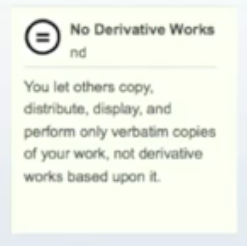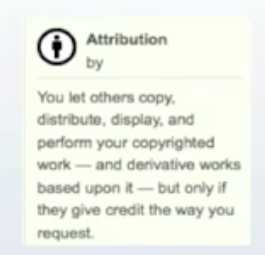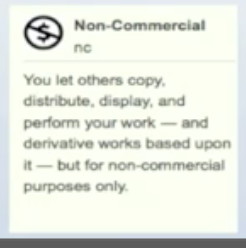EDM613 Media Asset Creation
Week 1 Reading Blog Post
June 29, 2012
The whole notion of copyright and fair use has been clarified through this week's reading (3 sets of videos), but has also further muddied my understanding of what I am able to use as an educator, how much I am able to use, and how concerned I should be about using something created by someone else. There is a sense of unease that always comes with using photos and film clips and other materials that you did not create. That sense of unease frequently causes me to underutilize materials in my presentations, both for this course, and in the education of my students.
What I better understand is the definition of copyright, and how I can use copyrighted information. I understand that in order to use material created by someone else, be it text, video, still images, music, or even dance, permission needs to be obtained. Fortunately, with fair use, I can "borrow" small portions of materials to use with my students. (I am still very unclear on what small portions really means.) I also know that it is critical to credit the original creator whenever possible. This is the biggest issue for my students - they think that if something is on the Internet, it is available for them to use. Use often translates into copy, and they really struggle to understand the difference.
Having said this, I do appreciate the last set of videos from this week's assignment. I appreciate the Creative Commons notion - that in this information rich Internet age we live in, there exist agreed upon guidelines that do carry the weight of the law.

As mentioned in the videos, Creative Commons falls somewhere in between "All rights restricted" and "public domain". If all information were clearly labeled using these guidelines, it would be less difficult to determine whether or not I am able to use the information, for example, in a lesson for my students.
This coding system will also help me better educate my students as to what information they are able to use for projects, as well as their personal uses.


Still images captured from video:
copyright pt3-2cc videos.m4v

Paula,
ReplyDeleteI definitely have to agree with you when you said “further muddied my understanding of what I am able to use as an educator, how much I am able to use, and how concerned I should be about using something created by someone else.” Because being that we do work in the education field there is a lot of material that is at our disposal and but now that we know about the different copyright laws it does make you wonder what you are able to use without citing the information. Also I have to agree with you again when it does come to the “Fair Use” how much is an actually small portion??? That one thing that the material didn’t say and makes me wonder myself, because I wouldn’t want no one to feel I used to much of there materials and I didn’t give them the proper citing.
Paula,
ReplyDeleteAs with any newly acquired information, it will take reading and rereading that information and correctly using material to learn how to efficiently use copyrighted material before we feel comfortable. I know it will take me a while to understand all the information that we have learned about this week. I don’t feel it will be an easy task. “Muddied” is a good way to explain my understanding at this time also. Although, some issues are clearly, such as what is legal and not legal to use, what can and can’t be copyrighted, and what Fair Use is about. A small portion? Does that mean less than half? I think we need more information on that one. I do feel it is very important to educate our students on copyright laws. You are correct about their mentality concerning anything on the Internet. Now I know how to show them and tell them the correct way to use any material that they did not create themselves. That is a good feeling!
Paula,
ReplyDeleteAs a fellow educator, I certainly agree with you when you mentioned having a sense of unease when using digital information from within your activities and lessons. It can certainly be a major turn off for using this digital media, which is unfortunate because our students truly enjoy using it. It would certainly be nice for everyone if there was a cut and dry outline for what people can use and sometimes there is and is not. There have been a number of websites that I have come across and would like to use images or video for educational purposes and what I have done has been simple. I always write an email to the website’s individual(s) that are listed within the contact section of the website. Here I notify the person of what images I would like to use, what I am using it for and normally I hear back within a day or so with permission to utilize the digital information.
I, too, feel uneasy about the rules and regulations surrounding copyright laws! I understand how we are able to use small portions, but you are right when you asked "What is a small portion?" I am excited about the thought of adding new ideas and media examples in my classroom but apprehensive as well. I do not want to cross the line of what is right and wrong as far as copyrights are concerns. Yes, you can cite the author/ creator, but unless you have a clear understanding of what is your right to use the media...the waters can get "muddy"! I think because of my previous lack of knowledge of copyright laws, I found myself rarely using any photos that I personally didn't take. Maybe I will now be able to properly use the hundreds of thousands of resources available to me at my fingertips!
ReplyDeleteGood overview of the copyright issues. It can be difficult to really understand what is meant by "small portion" when considering what is permitted under Fair Use. Caution is always advised.
ReplyDelete